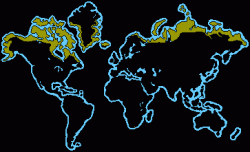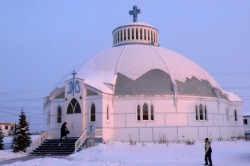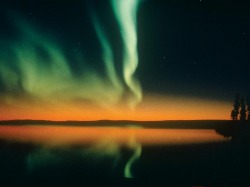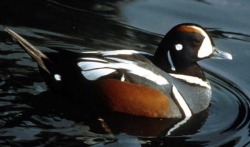Arctic Tundra
The Tundra biome is one of the most unique biomes in the world. Covering one-tenth of the earth's land area, it is a substantial biome. The Tundra is located above the treeline towards the North Pole. It is the least inhabited biome in the world when it comes to humans, because the Tundra is not used for human activity it is most likely to change and damage from human use or pollution.
Weather
Temperature: 12 degrees Celcius (54 degrees Fahrenheit) in the summer
-34 degrees Celcius (-30 degrees Fahrenheit) in the winter
Precipitation: Melting snow: 15-25cm (6-10in)
Yearly Rainfall: 30-50cm (12-20in)
Clothing
You must dress very warmly in the winter because of the freezing cold winds and well below freezing temperature. I suggest that you wear many layers of loose clothing to keep you warm.
Location

The Arctic Tundra is located in the Northern Hemisphere, encircling the North Pole, extending south to the coniferous forests of the Taiga.
Things to do

Visit the Igloo Church in Inuvik, North West Territories, Canada
Visit the Arctic Circle
Go Fishing
Climb Mountains
Go Kayaking duing the summer
Wildlife
(Click the links for more information about the animal or the plant)
Animals:
Arctic Fox
Caribou
Ermine
Grizzly Bear
Harlequin Duck (the picture below)
Musk Ox
PolarBear
Snowy Owl
Plants:
Arctic Moss
Arctic Willow
Bearberry
Caribou Moss
Diamond-leaf Willow
Labrador Tea
Pasque Flower
Tufted Saxifrage
Things to see

Animals
Birds
Igloo Homes (winter)
Tent Homes (summer)
Auroras
Northern Lights
Critical Issues
The Arctic Tundra has critical carbon issues, including the accumulation and loss of carbon and organic or peatland type soil profiles.
In Arctic Alaska, air temperatures have warmed .5 degrees Celsius per decade for the past 30 years, with most warm temperatures coming in the winter.


